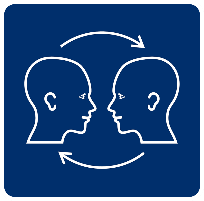Augmentative and Alternative Communication (AAC) is a range of strategies and tools to help people who struggle with speech. These may be simple letter or picture boards or sophisticated computer-based systems. AAC helps someone to communicate as effectively as possible, in as many situations as possible.
We use the term AAC to describe various methods of communication to get around problems with ordinary speech. Some kinds of AAC are actually part of how everyone communicates: for example, waving goodbye; giving a “thumbs up’ instead of speaking; pointing to a picture, or gesturing in a foreign country.
However, people with speech difficulties have to rely on AAC most of the time. Some AAC tools “add on” to verbal communication – simple methods such as pictures, gestures and pointing.
Some people need more complex help to communicate, such as powerful computer technology.







